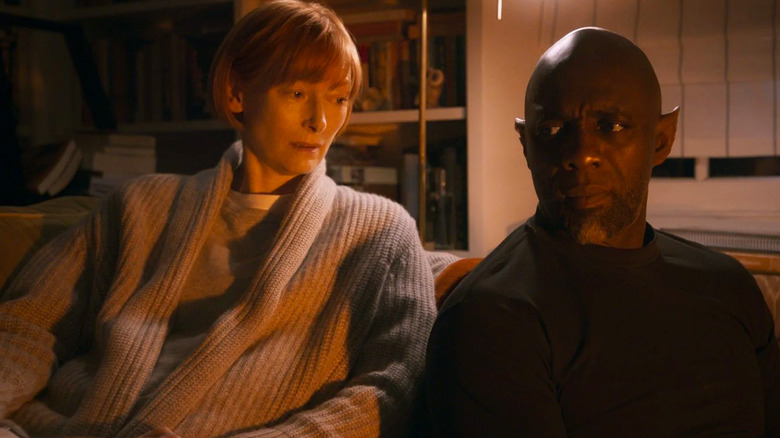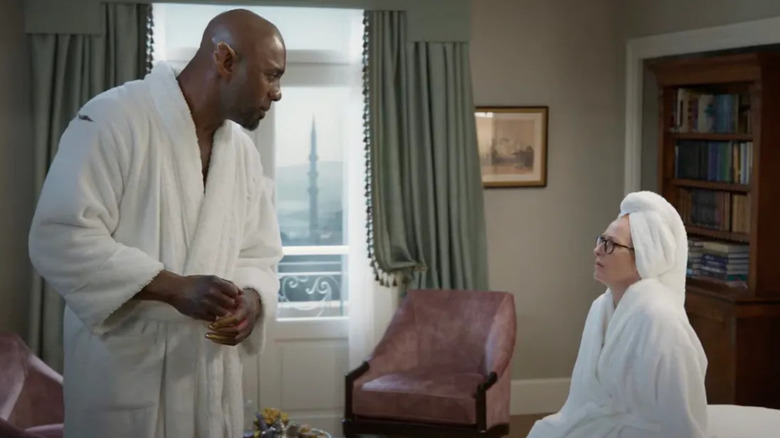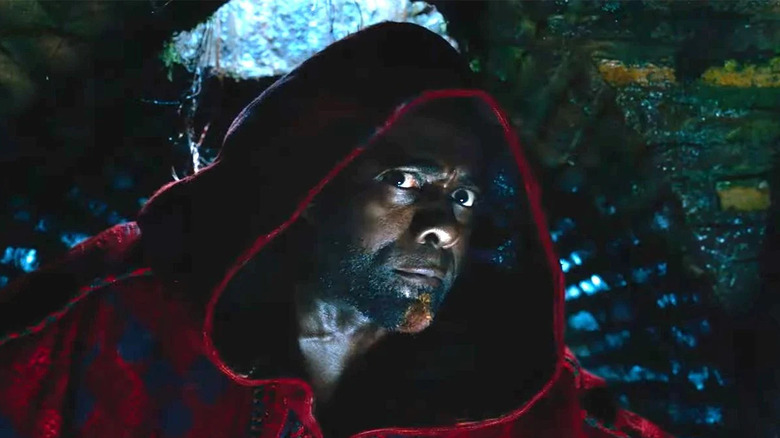Three Thousand Years Of Longing Review: George Miller Delivers An Epic, Romantic Fairy Tale About The Power Of Storytelling [Cannes]
George Miller is one of our greatest maximalist filmmakers, capable of taking the smallest idea and turning it into a wonderfully bonkers, visually striking movie. For his follow-up to "Mad Max: Fury Road," Miller gives us a throwback fairy tale that feels more like his follow-up to "Babe: Pig in the City."
The film follows Tilda Swinton's Alithea, a narratologist on a trip to Istanbul for a conference who has a fateful encounter with a Djinn (Idris Elba) who offers her three wishes. The first problem is that Alithea seems content with her life, to the point where she cannot even come up with three wishes one would ask for. The second problem is that she's made a career out of studying story and myth, and knows all about the cautionary tales of wish-granting and trickster Djinns. What follows is essentially a very long conversation wherein the Djinn tries to convince Alithea that she should spend her wishes, as he tells her the story of his past interactions with humans, and what he's learned about them and himself.
Though there are areas where you can see the impact of the pandemic on the production, the film was always meant to be more of a talker, and that is the greatest difference between this and "Mad Max: Fury Road." Most of "Three Thousand Years of Longing" is just Elba and Swinton sitting in a hotel room in their bathrobes just talking, yet it is a testament to both the script Miller co-wrote with his daughter, Augusta Gore, and Miller's sense of visual storytelling that this never becomes just "My Dinner With Djinn."
Wonder and Discovery
Indeed, the hotel room scenes become some of the most riveting scenes you can see in a movie all year, thanks to cinematographer John Seale finding new and interesting angles to make the conversational scenes feel lively and visually varied each time — he also makes the flashback scenes feel almost cartoonish by playing with the frame rate as he did in "Fury Road," which adds another storybook-like layer to the film.
At a time when blockbuster movies constantly try to hold our attention by filling the screen with CGI creatures and fights, Miller shows you don't need a huge canvas in order to make the frame feel interesting and important. Every scene is shot in a way that draws your eye to some shiny new detail rich with story, even without the need for obvious cues like stilt-walking human crows or a guitarist wearing the dried skin of his mother's screaming face as a mask. From the Istanbul markets, the vast halls of the Queen of Sheba's palace, to a guy's head turning into a demon that dissolves into thousands of creepy spiders, to a small scene where King Solomon plays an enchanted instrument, Miller fills every moment with a sense of wonder and discovery.
Though the scenes where the Djinn just talks to Alithea about life are the most thematically rich, the stories within the story about the Djinn's long and arduous life are where the Miller magic truly shines. As you'd expect from a Miller film, the colors are richly saturated to make every scene look straight out of a picture book (it at times brings to mind Tim Burton's "Big Fish," a movie that absolutely rules). Miller brings back a lot of his "Fury Road" crewmembers in order to make the historical scenes look grander, with a sense of scope that defies the film's COVID-19 restrictions. Composer Junkie XL returns with a score that is grandiose and operatic, carrying the weight of thousands of years of love and longing in each musical note.
A story about the importance of storytelling
At its core, "Three Thousand Years of Longing" is a lovely story about the importance of storytelling, especially today. It's about how, even if we no longer need to explain the mysteries of the universe through fables, we still use storytelling to explain our emotions and desires. There is no moral lesson to be had with the stories the Djinn tells, no cautionary tale about greed or lust, they are simply stories about the tiny mistakes we make that escalate beyond our control, about regret. In other words: these are stories about being human.
The one aspect where the restrictions caused by the pandemic really show is in the reliance on CGI to bring the film's mythical locations to life. At times the VFX look a bit cheap, but rather than hide them, Miller and his team bring them to the forefront and make sure you notice the artifacts he uses to tell this story, just like storytellers of ages part used available technology, however wonky, to help them tell their stories.
"Three Thousand Years of Longing" tells a fantastic and poignant story about storytelling, longing, and love. It's about the art of telling smaller, intimate stories at a time when big stories seem to only be valid. A fairy tale with more in common with "Babe" than "Mad Max," this movie reaffirms George Miller as one of the great magicians of cinema working today.
/Film rating: 9 out of 10
"Three Thousand Years of Longing" premiered as part of the Cannes Film Festival 2022.


